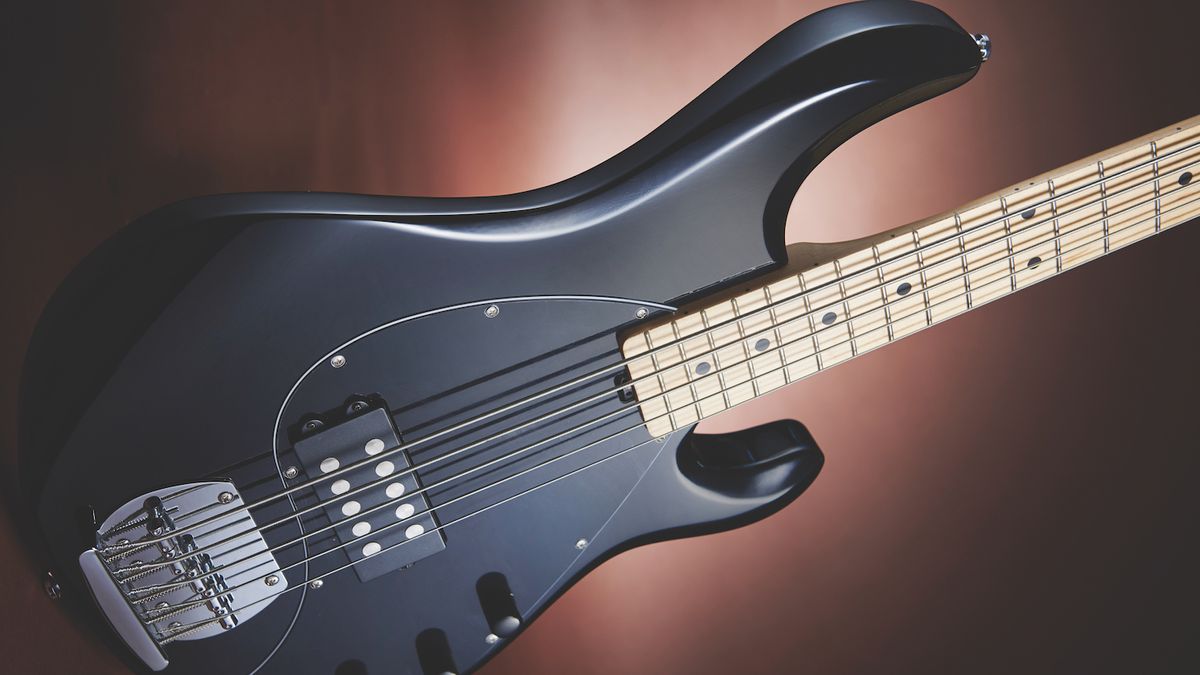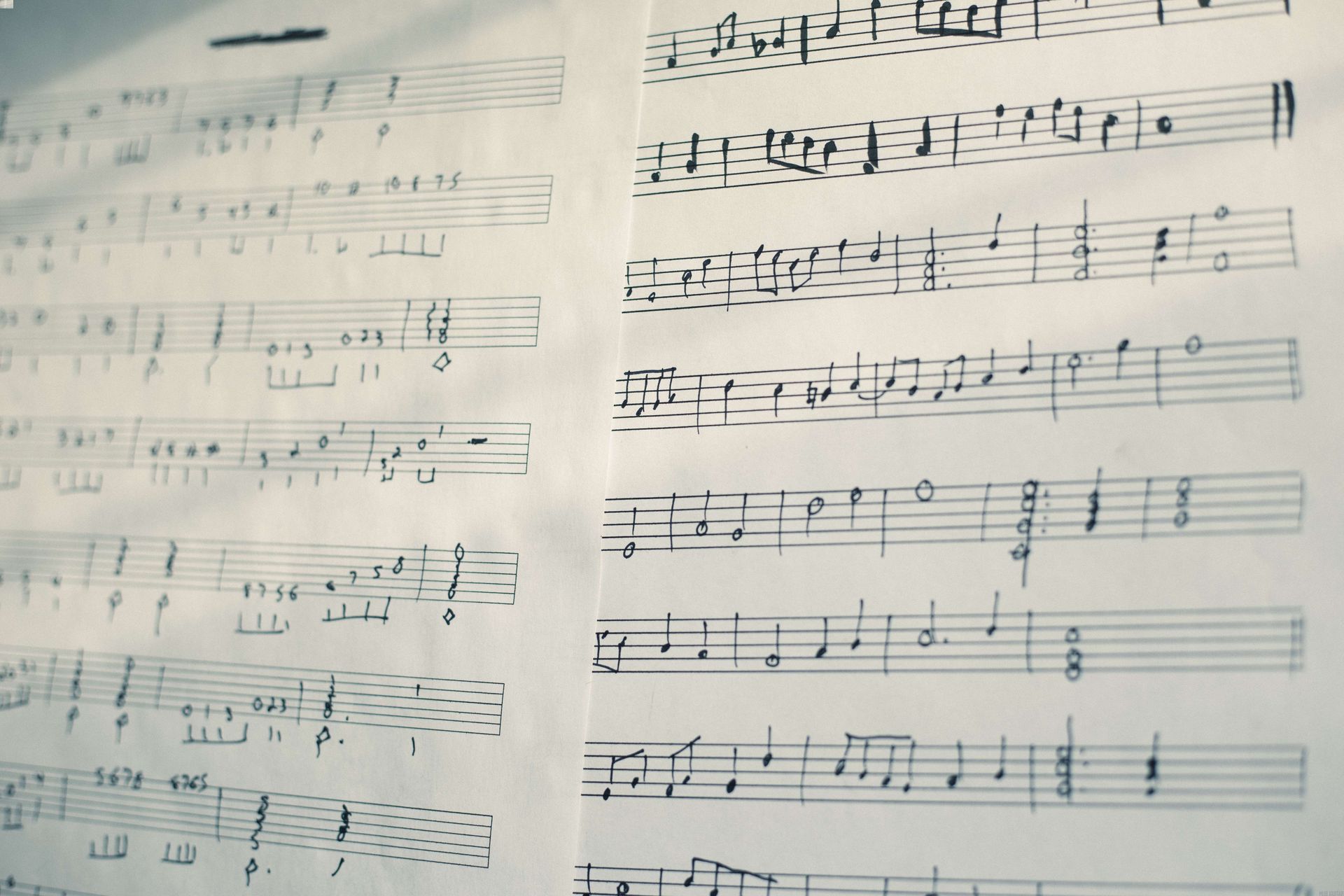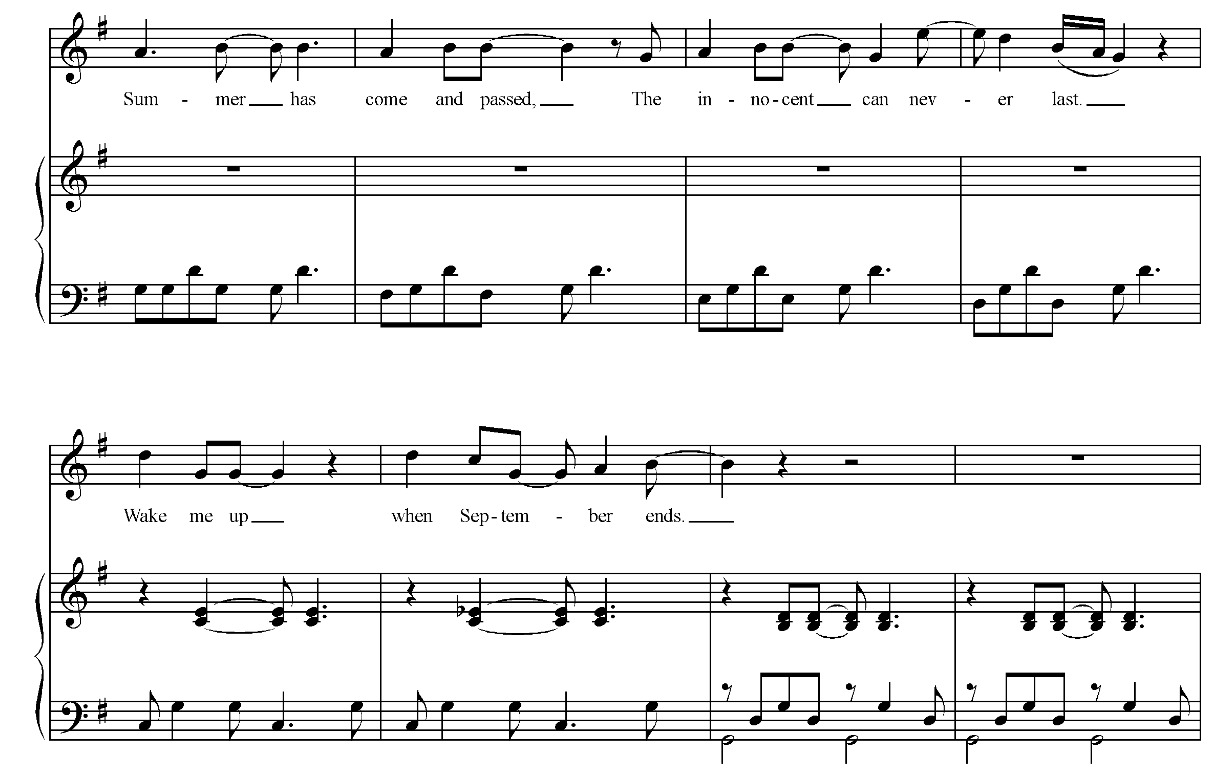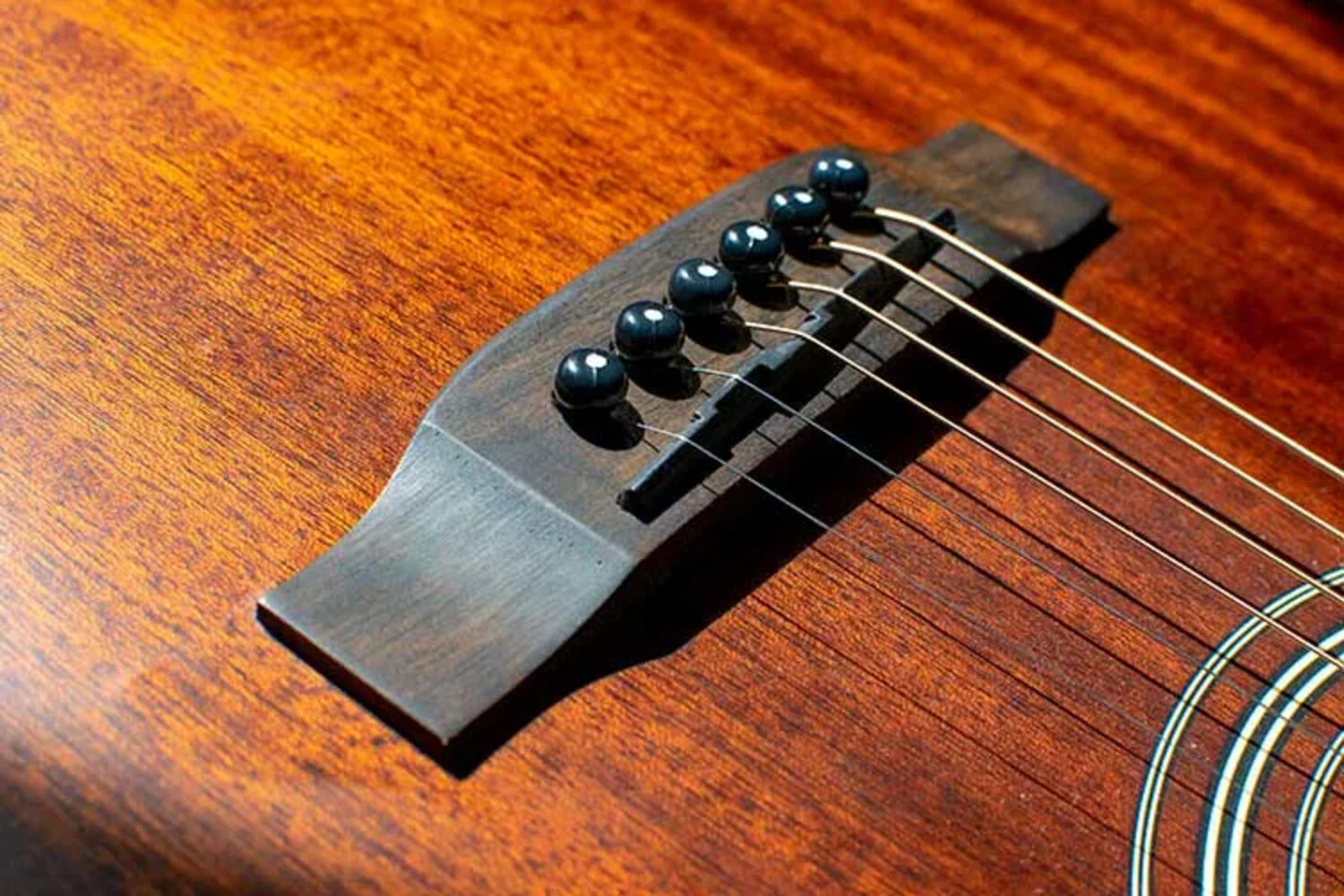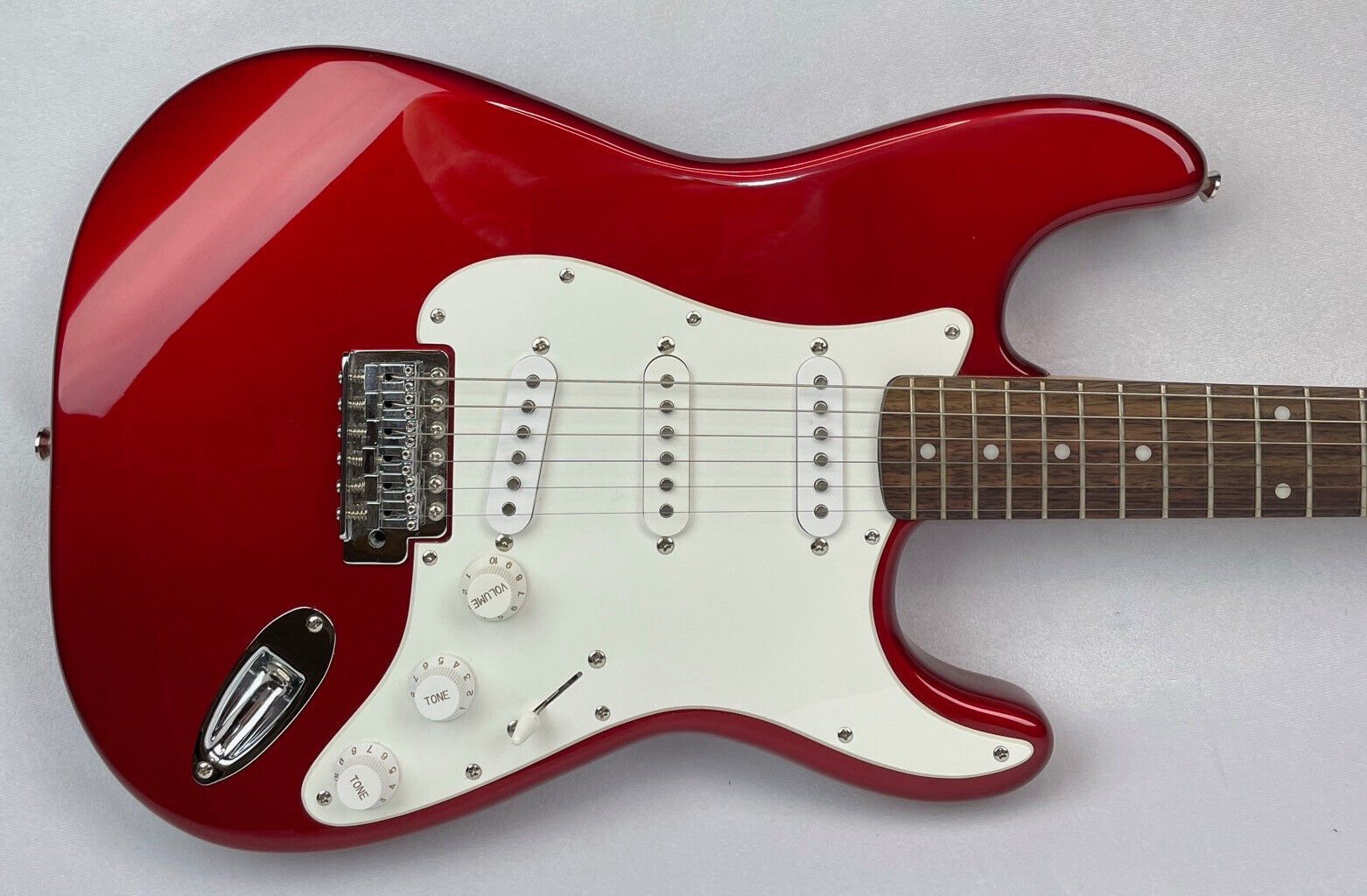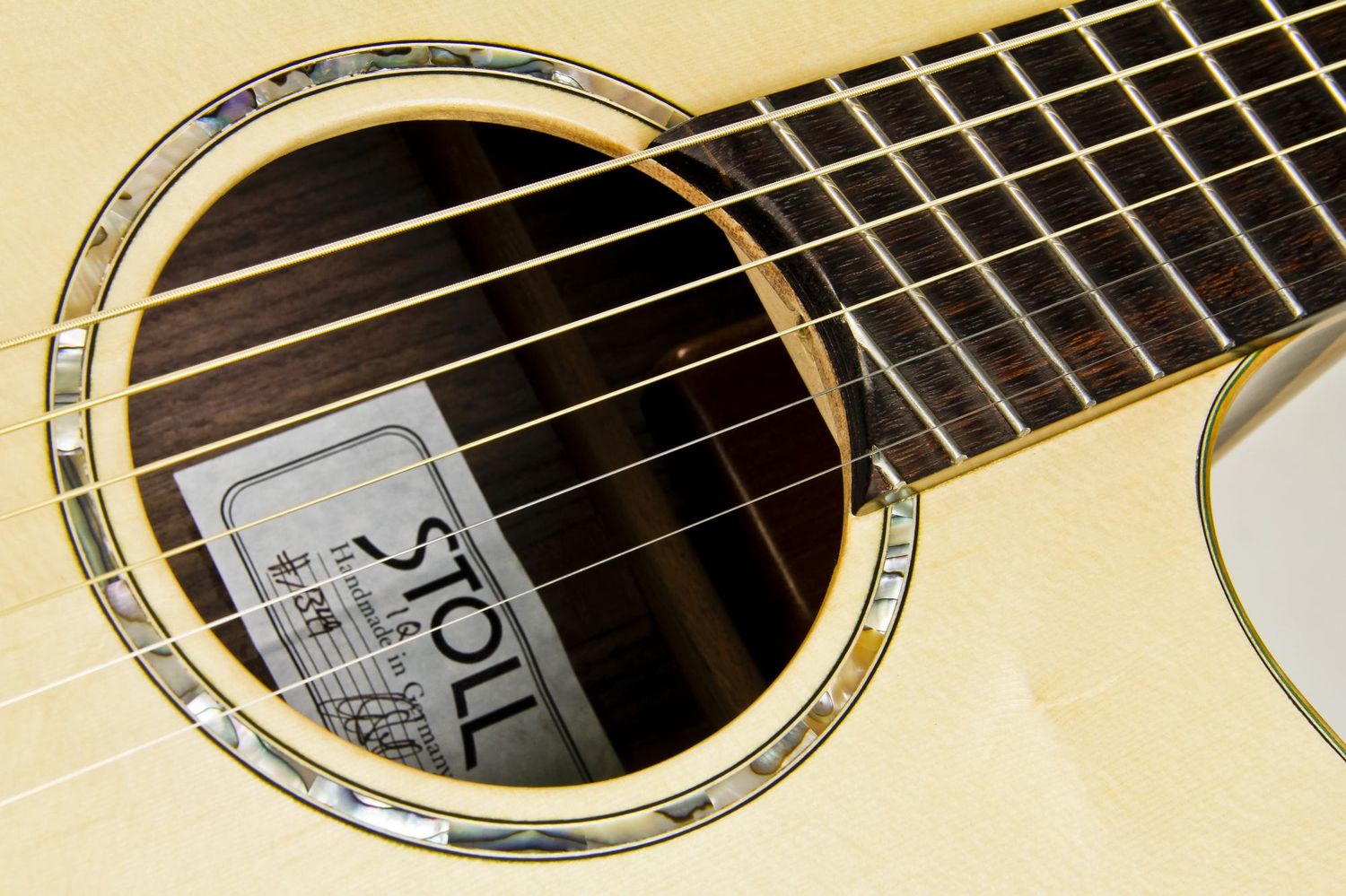Home>Instruments>Guitar>What Are Guitar Tabs


Guitar
What Are Guitar Tabs
Published: February 15, 2024
Learn how to read and play guitar tabs with our comprehensive guide. Master the art of playing the guitar with easy-to-follow tablature.
(Many of the links in this article redirect to a specific reviewed product. Your purchase of these products through affiliate links helps to generate commission for AudioLover.com, at no extra cost. Learn more)
Table of Contents
Introduction
Guitar tabs, short for tablature, are a popular form of musical notation used by guitarists to learn and play songs. Unlike traditional sheet music, which requires an understanding of standard notation, guitar tabs provide a straightforward way to visualize where to place fingers on the instrument's fretboard. This intuitive system has made guitar tabs a valuable resource for beginners and seasoned players alike, revolutionizing the way people approach learning and playing the guitar.
Guitar tabs have become an integral part of the guitarist's toolkit, offering a simple and accessible method for learning new songs and compositions. Whether you're a casual strummer or a dedicated virtuoso, understanding how to read and interpret guitar tabs can significantly enhance your musical journey. In this article, we will delve into the history of guitar tabs, explore how to read them, discuss the common symbols used, and weigh the advantages and disadvantages of this popular notation system. Whether you're new to the world of guitar or a seasoned player looking to expand your skills, mastering the art of guitar tabs can open up a world of musical possibilities.
History of Guitar Tabs
The history of guitar tabs can be traced back to the Renaissance era, where lute tablature was used as a means of notating music for the lute, a popular instrument of the time. This early form of tablature provided a visual representation of where to place fingers on the lute’s fingerboard, allowing musicians to play complex pieces without extensive knowledge of standard musical notation.
Fast forward to the 20th century, and guitar tabs began to gain traction as the popularity of the guitar surged. With the rise of rock ‘n’ roll and the electric guitar, guitarists sought a more accessible method of learning and sharing music. As a result, guitar tablature evolved to accommodate the unique characteristics of the guitar, providing a simple yet effective way to convey musical ideas.
One of the key developments in the history of guitar tabs was the emergence of online tablature archives and communities in the late 20th century. Websites such as Ultimate Guitar and 911Tabs became hubs for guitar enthusiasts to share and access a vast array of tabs for songs spanning various genres. This digital revolution democratized the distribution of guitar tabs, empowering musicians worldwide to learn and play their favorite songs with unprecedented ease.
Today, guitar tabs continue to flourish in the digital age, with countless websites, forums, and apps dedicated to hosting and creating tabs for guitarists of all levels. The accessibility and versatility of guitar tabs have cemented their status as an invaluable resource for anyone looking to master the guitar. As the evolution of technology and music intersect, the future of guitar tabs is poised to remain vibrant and essential in the musical landscape.
How to Read Guitar Tabs
Reading guitar tabs is a relatively straightforward process, making it an accessible option for aspiring guitarists. Each line on the tab represents a string on the guitar, with the top line corresponding to the highest-pitched string (usually the high E string) and the bottom line representing the lowest-pitched string (usually the low E string). Numbers on the lines indicate which fret to press down on that particular string, allowing you to visualize the finger positions for a given chord, riff, or melody.
When reading guitar tabs, it’s essential to pay attention to the timing of the notes. While standard notation uses specific symbols to denote note duration, guitar tabs rely on the horizontal spacing between numbers to indicate timing. This means that notes placed closer together should be played in quick succession, while notes with greater spacing require a longer pause between them.
Furthermore, guitar tabs often include additional symbols and notations to convey techniques such as bends, slides, hammer-ons, and pull-offs. These embellishments add depth and nuance to the music, allowing guitarists to replicate the intricacies of a song with greater accuracy.
Understanding how to read guitar tabs opens up a world of musical possibilities, enabling players to learn new songs, experiment with different playing styles, and develop their musical repertoire. Whether you’re aiming to strum along to your favorite tunes or master complex solos, the ability to interpret guitar tabs is a valuable skill that can enrich your guitar-playing experience.
Common Symbols Used in Guitar Tabs
While guitar tabs provide a visual representation of where to place fingers on the fretboard, they also incorporate various symbols to communicate specific playing techniques and articulations. Understanding these symbols is crucial for accurately interpreting and performing the music indicated in the tablature. Here are some common symbols used in guitar tabs:
- Numbers: The numbers on each string indicate which fret to press down. For example, a “3” on the high E string means you should press down the third fret of that string.
- Open String: An “0” represents an open string, indicating that the string is played without pressing down any frets.
- Hammer-Ons and Pull-Offs: These techniques are denoted by “h” and “p” symbols, respectively. A “h” indicates a hammer-on, where a note is sounded by quickly pressing a finger onto a fret, while a “p” represents a pull-off, where a finger is lifted off to produce a lower note.
- Bends and Release: Bends are indicated by an arrow pointing upwards, while the release of a bend is denoted by an arrow pointing downwards. These symbols signify the manipulation of pitch by physically bending the string.
- Slides: Slides are represented by “/” or “\”, illustrating the direction in which the slide should occur. A “/” indicates an ascending slide, while a “\” denotes a descending slide.
- Vibrato: The symbol “v” is used to indicate vibrato, a technique that involves rapid and slight variations in pitch to add expressiveness to a note.
- Palm Muting: Palm muting is denoted by a “P.M.” or “p.m.” above the tab, signifying that the strings should be partially muted by the picking hand’s palm.
By familiarizing yourself with these symbols and their meanings, you can effectively interpret guitar tabs and replicate the intended musical expressions. Mastery of these symbols empowers guitarists to infuse their playing with the nuances and dynamics present in the original compositions, ultimately enhancing their musical performances.
Advantages of Using Guitar Tabs
Guitar tabs offer several advantages that make them a valuable tool for guitarists of all levels. Here are some of the key benefits of using guitar tabs:
- Accessibility: Guitar tabs provide a user-friendly method for learning songs without the need for extensive knowledge of standard notation. This accessibility makes it easier for beginners to start playing their favorite tunes and encourages them to continue their musical journey.
- Visual Representation: Tabs offer a visual representation of finger positions on the fretboard, making it easier for guitarists to understand and replicate chord shapes, riffs, and melodies. This visual aid can accelerate the learning process and enhance overall comprehension.
- Popular Songs and Riffs: Guitar tabs are widely available for popular songs and iconic guitar riffs, allowing players to quickly access and learn music they are passionate about. This accessibility to a vast repertoire of music contributes to the enjoyment and motivation of learning the guitar.
- Technique Visualization: Tabs can effectively convey specific playing techniques, such as bends, slides, and hammer-ons, through visual symbols. This visual representation helps guitarists grasp the nuances of a piece and develop their technical skills more effectively.
- Community Sharing: Online platforms and communities dedicated to guitar tabs facilitate the sharing of musical knowledge and encourage collaboration among players. This interconnectedness allows guitarists to discover new music, exchange tips, and engage with a supportive community.
Overall, the advantages of using guitar tabs lie in their accessibility, visual clarity, and contribution to a vibrant musical community. By leveraging these benefits, guitarists can expand their repertoire, refine their playing techniques, and derive immense enjoyment from their musical pursuits.
Disadvantages of Using Guitar Tabs
While guitar tabs offer numerous benefits, it’s important to acknowledge some potential drawbacks associated with their use. Understanding these disadvantages can help guitarists make informed decisions about their learning and playing approach. Here are some of the key disadvantages of relying solely on guitar tabs:
- Lack of Rhythmic Notation: Guitar tabs often lack precise rhythmic notation, making it challenging to determine the duration of notes and the rhythm of a piece. This can pose difficulties for players aiming to replicate the rhythmic intricacies of a song accurately.
- Minimal Music Theory Understanding: Relying solely on guitar tabs may hinder the development of a comprehensive understanding of music theory, as it focuses primarily on finger positions and string numbers rather than note values and musical structure.
- Dependence on External Sources: Guitar tabs may not always be accurate or reliable, especially when sourced from user-generated content online. Relying solely on tabs without cross-referencing with recordings or official transcriptions can lead to learning inaccuracies.
- Limited Interpretation of Articulations: While tabs convey basic playing techniques, they may not capture the full range of musical articulations and expressions present in a piece. Nuances such as dynamics, phrasing, and articulations are often not explicitly indicated in tabs.
- Stagnation of Ear Training: Exclusively using guitar tabs can hinder the development of ear training skills, as players may become reliant on visual cues rather than honing their ability to learn music by ear and recognize musical patterns and intervals.
Recognizing these disadvantages underscores the importance of supplementing guitar tablature with a broader musical education, including exposure to standard notation, ear training, and music theory. While guitar tabs serve as a valuable entry point for learning songs, integrating diverse learning methods can enrich a guitarist’s musical proficiency and depth of understanding.
Conclusion
Guitar tabs have undeniably transformed the landscape of guitar education and performance, offering a user-friendly gateway to learning and playing music. Their accessibility, visual clarity, and widespread availability make them an invaluable resource for guitarists seeking to expand their repertoire and refine their playing techniques. The evolution of guitar tabs from historical lute tablature to the digital age underscores their enduring relevance and adaptability in the ever-changing world of music.
While acknowledging the advantages of guitar tabs, it’s essential for aspiring guitarists to balance their reliance on tabs with a broader musical education encompassing standard notation, music theory, and ear training. By embracing a multifaceted approach to learning, guitarists can cultivate a deeper understanding of music and develop a more comprehensive skill set that transcends the limitations of tablature.
Ultimately, guitar tabs serve as a valuable entry point and learning tool, empowering players to explore a diverse array of music and connect with a global community of fellow enthusiasts. Embracing the strengths of guitar tabs while supplementing them with a holistic musical education can equip guitarists with the knowledge and skills needed to embark on a fulfilling and enriching musical journey.


